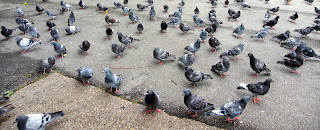Standing opposite the Guildhall is this imposing building. It was built in 1904 with later additions in the '30s and '50s. The monumental renaissance style apparently compares well to the Opera House in Paris; but this was the central post office and Royal Mail sorting office until quite recently. The grand facade hid a hive of activity with dozens of delivery vans coming and going, the mail sorted and prepared for local delivery or for forwarding to the rail station. Now mail is sorted in a large shed on Malmo Road industrial estate, out of sight and more importantly out of reach of human beings who might need to pick up their undelivered parcels.
It has now been converted into town dwellings for city folks, ie. flats.










